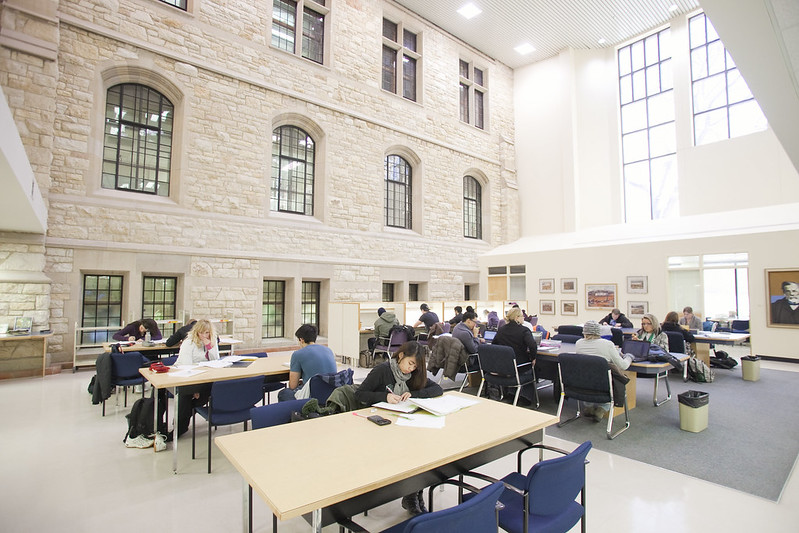
From Student to Researcher (in one Term!) Post 6: The Instructor’s Role
As instructors in a CURE course our responsibility is to set up the environment to promote learner autonomy. This means knowing what we are going to do and what we are not going to do. In this post we outline the key features of both.
By Harold Bull, Dawn Giesbrecht and Sheryl Mills(This blog series is authored by USask denizens Harold Bull, Dawn Giesbrecht and Sheryl Mills) Harold is Assistant Professor Biochemistry, Microbiology & Immunology. Dawn is Laboratory Instructor Anatomy, Physiology and Pharmacology; Biochemistry, Microbiology and Immunology. Sheryl is Associate Director, Academic Programs & Interprofessional Education)
As instructors in a CURE course our responsibility is to set up the environment to promote learner autonomy. This means knowing what we are going to do and what we are not going to do. In this post we outline the key features of both.
In a CURE, we do:
- Set up the architecture. Our work happens well before Day 1 of the course. Our team prepares the syllabus, defines general timelines, decides on deliverables, and comes to agreement on the ways in which we will interact with the learners in accordance with the principles of a CURE course. Note: We defined CURE in the first post in this series.
- Encourage collegiality and discovery from Day 1. We make the deliverables clear and are up front about both the individual and team responsibilities for the course. As an instructor-team, we outline our roles and responsibilities and emphasize that research is an iterative process of which failure is a natural and expected part. ‘Failure,’ reframed as surprising new information, clarifies and informs next steps[1].
- Organize research-interest-focused ‘speed-dating’ for learners to choose their teams for Project 1.
Note: It may be worthy to note that while a few learners leave at this point, no further attrition occurs 😉
- Revisit the parameters of this course and available approaches to remind learners of the ‘givens’ of the course. Note: Our CURE course focuses on molecular microbiology.
Teams get right into Project 1! This is where the shift from ‘instructor-led’ to ‘learner-led’ begins. Teams then shift easily from Project 1 into Project 2[2] and the term flows naturally—and rapidly! Note: Although there is opportunity for new teams to form for Project 2, teams generally remain the same. In the past three years, only two teams have shifted members, based on research interests.
During the term, the instructor team primarily serves as a resource to the research teams[3]. Their research is their research. Their projects are their projects. They are running their labs and experiments within the scope of the CURE course. We:
- Watch the progress of the projects
- Ensure lab safety (less onerous in 2021)
- Have weekly ‘lab meetings’ with each team. Here we:
- Coach the teams to appropriately scope their projects for the three months of the term
- Ask open-ended questions that help focus the learners to find the appropriate ‘next step’ and ‘next questions’
- Offer reminders of the value of ‘failure’= surprising new information 🙂
- Encourage team reflection on how they are working together
- Ask how they are progressing on meeting their timelines for deliverables (i.e. project management)[4]
- When asked[5], offer (we think) sage advise
- Provide reflective tools[6] (asked or not!)
In a CURE, we don’t:
- Dictate projects (or outcomes)
- Micromanage research decisions (i.e. experimental designs are generated by the teams—instructors DO ask questions that might guide further considerations such as inclusion of important controls…🙄)
- Know all the answers before anyone else
- Anticipate or meet all their needs before they have articulated them (i.e. we don’t ‘stock the cupboards’ for all potential creations)
- “Snowplow[7]”
- Get involved in team drama. There hasn’t been much drama at all…stay tuned for a specific episode (or two) on this one!
‘Without constant supervision’, in a collaborative well-structured CURE environment, learners make the shift naturally from ‘Student to Researcher’ in 3 cu.
Note: This, the ‘instructor’s role’, is the shortest episode in the series. When we do this right the learners are the ones doing the work and learning.
Find ALL BLOG POSTS IN THIS SERIES HERE. Find previous post here. Find Post Seven Here.
Podcasts:
[1] ‘Students’ often come to a CURE used to functioning in a ‘right/wrong’ environment. This is antithetical to being a researcher.
[2] Learners are submitting their ideas for Project 2 while working to complete Project 1.
[3] We often invite colleagues to provide additional information and focus attention on things like reflective practice and teamwork skills (i.e. Dr. S. Mills)
[4] Gantt charts are introduced as one potential tool for planning and managing specific tasks within team projects.
[5] This is tough! When you can see the train heading off the rails…😲 – Remember we’re growing researchers, not research papers.
[6] Reflective tools for teamwork and research skills. Currently we use the RSD7 Framework twice per term (moving to 3 per term) as a reflective and self-assessment tool so they can identify their shift and have the shared language to describe this shift.
[7] It is not unusual for instructors, through kindness and consideration (or/and to get better student evaluations 🙄), to remove all potential challenges or difficulties or barriers, but in doing so are also removing potential learning and growth opportunities. Snowplows can plow away opportunities as well as barriers.

